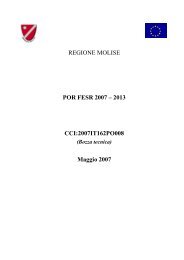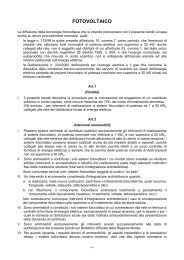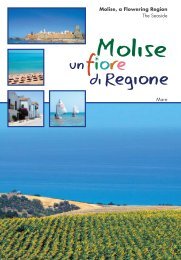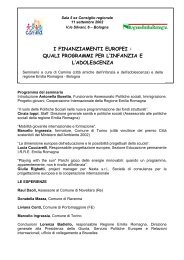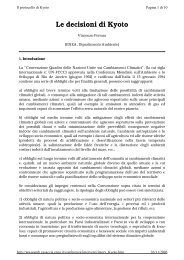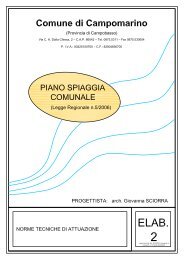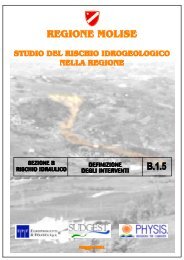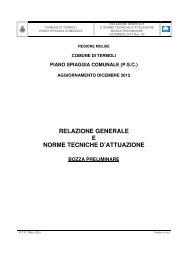Il Lago di Castel San Vincenzo e l'antica Terra ... - Regione Molise
Il Lago di Castel San Vincenzo e l'antica Terra ... - Regione Molise
Il Lago di Castel San Vincenzo e l'antica Terra ... - Regione Molise
You also want an ePaper? Increase the reach of your titles
YUMPU automatically turns print PDFs into web optimized ePapers that Google loves.
The Bagpipe capital<br />
Scapoli name is connected to the Latin names of “Scopulus” and “Scapulae”,<br />
which mean “rock” and “descent”. However its original name was Castrum<br />
Scappili and its origin was joined to the colonization process of <strong>San</strong> <strong>Vincenzo</strong> al<br />
Volturno Abbey. Today Scapoli is the capital of the bagpipe, the ancient instrument<br />
of the pastoral tra<strong>di</strong>tion, which is just produced<br />
and sold in Fontecostanza hamlet. There<br />
is a monument of the “Piper” in a pleasant<br />
little square of the village. Scapoli is also a<br />
me<strong>di</strong>oeval village with its panoramic<br />
“Cammino <strong>di</strong> Ronda”. Interesting is the side<br />
portal of the S. Giorgio Church. Here you can<br />
find a tipical raviolo made of pasta, sausages<br />
and vegetables.<br />
The Bagpipe Museum<br />
The Bagpipe Museum is housed in Palazzo<br />
Mancini, a buil<strong>di</strong>ng easily visible from the central<br />
and picturesque Piazza dei Martiri. It was<br />
created using funds from law 64/86 and officially<br />
inaugurated on the 28th July 2002. Inside<br />
a large hall, there are a lots of extremely precious<br />
instruments, bought from all over the<br />
world, <strong>di</strong>splayed in glass cases. The jewels in<br />
the crown are the Scapolese bagpipes and<br />
those from Sicily, Sar<strong>di</strong>nia, Lombardy,<br />
Piedmont, Puglia, Veneto and Calabria, together<br />
with very fine instruments from Croatia,<br />
Istria, France, Ireland, Scotland,<br />
Macedonia, Turkey, England, Anatolia,<br />
Greece, Bulgaria, Hungary, Poland, Spain,<br />
Slovakia, Romania, Kur<strong>di</strong>stan, Azerbaijan and<br />
even as far as In<strong>di</strong>a, an aboriginal region of<br />
Australia, Bali, Tibet, Mongolia, China, Argentina,<br />
Ande, Perù, Vietnam, Cambo<strong>di</strong>a and Senegal.<br />
The Mu.C.I.L.<br />
The MU.C.I.L. (Corpo Italiano <strong>di</strong> Liberazione<br />
Museum) is a stan<strong>di</strong>ng collection of the finds<br />
and the historical documents about the Second<br />
World War found out in Scapoli’s area. Scapoli<br />
1943-44 Association with Scapoli’s government wan-<br />
Scapoli - 123<br />
Zampogna moderna<br />
costruita dal maestro<br />
Piero Ricci.<br />
(Foto T. Paolone)<br />
ted its institution. The Museum’s curiosities concern the flag and the hats which<br />
the members of the Italian Alpine troops used in the Monte Marrone conquest. In<br />
the show-cases there are the uniforms and others pieces belonged to the<br />
American, Italian, French, Maghrebi and German troops. Remarkable is also the<br />
photographic index.



